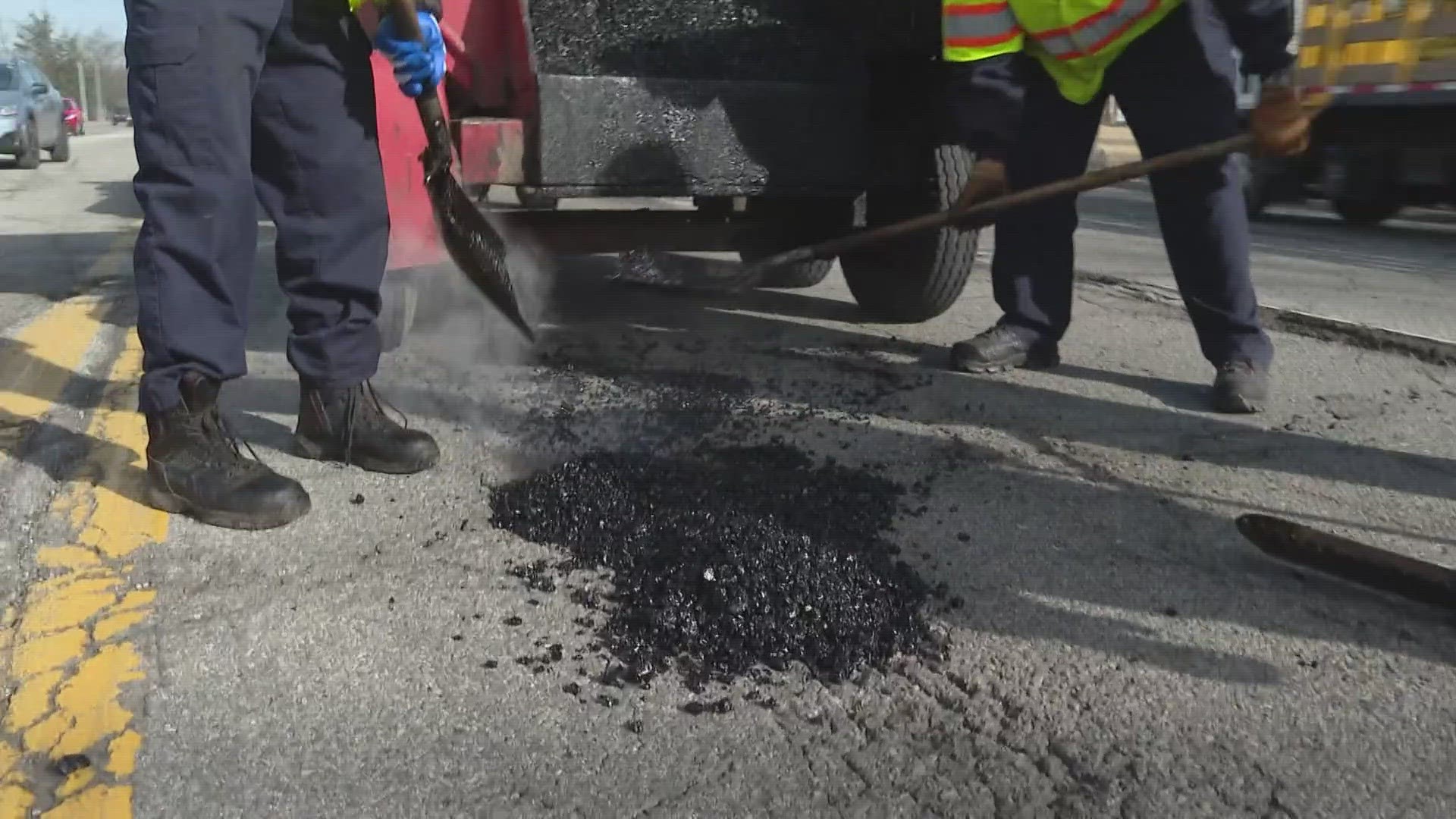Unlocking the Keys of Warm Mix Asphalt Technology
Discovering the midsts of hot mix asphalt technology uncovers a world where meticulous processes and specific formulas assemble to shape our roads and framework. The fusion of accumulations, fillers, and binders isn't merely a construction job yet a critical orchestration of durability and performance. As we peer right into the complex dance of components, a tapestry of strength and sustainability unravels. What lies under this surface area of asphaltic mastery, and what secrets wait to be revealed in the realm of paving technologies?
Significance of Warm Mix Asphalt
Hot Mix Asphalt plays an important function in contemporary framework growth due to its longevity and cost-effectiveness. As the most commonly used paving material for roads, freeways, and parking great deals, Hot Mix Asphalt provides a variety of benefits that add to its importance in building and construction projects.
The toughness of Hot Mix Asphalt stems from its make-up, which consists of aggregates, binder, and filler products that are thoroughly picked and mixed to meet details performance requirements. On the whole, the value of Hot Mix Asphalt in framework advancement can not be understated, as it continues to be a cornerstone of modern-day construction techniques.
Parts of Asphalt Mixes
The make-up of asphalt mixes contains very carefully selected accumulations, binder, and filler materials that are crucial for attaining particular efficiency demands. Accumulations are the main component of asphalt blends, providing toughness and security. These aggregates can be all-natural, such as gravel or smashed rock, or synthetic, like recycled products from old pavements. The binder, typically bitumen or asphalt concrete, holds the aggregates together and supplies flexibility and resilience to the mix. The choice of the binder is crucial as it directly affects the mix's efficiency in different climate condition. Fillers, such as hydrated lime or Portland concrete, are used to boost the mix's workability and aging resistance. Angled Parking.
The mix and percentage of these elements play a considerable function in establishing the top quality and efficiency of the asphalt mix. Designers carefully design the mix to meet specific requirements, taking into consideration factors like web traffic quantity, environment conditions, and pavement life-span. Correct option and harmonizing of accumulations, binder, and fillers are important for creating sturdy, durable asphalt sidewalks.
Mixing and Production Methods

As soon as the aggregates are chosen, the binder, commonly asphalt cement, is added to bind the materials together. The binder's quality and quantity considerably affect the mix's stamina, resistance, and versatility to ecological elements. Additionally, fillers like hydrated lime or Rose city concrete may be incorporated to great site enhance specific characteristics of the asphalt mix, such as its workability or dampness resistance.
Throughout production, the aggregates and binder are heated, typically in between 250-325 ° F(121-163 ° C ), to assist in mixing and guarantee proper coating of the accumulations. The mixing process has to be complete to accomplish a homogeneous mixture that advertises the preferred performance qualities of the asphalt. Various techniques, such as set blending or drum mixing, are employed to attain regular and high-quality asphalt mixes for building jobs.
Factors Influencing Asphalt Efficiency
Variables affecting asphalt performance include a series of variables that influence the sturdiness, longevity, and general top quality of asphalt sidewalks. One key aspect is the quality of products made use of in the asphalt mix. The type and resource of aggregates, the binder high quality, and the ingredients all play a considerable duty in identifying the efficiency of the asphalt sidewalk. The gradation of accumulations is essential as it influences the mix's stability, resistance, and workability to cracking and rutting.

Layout considerations, such as pavement thickness and drainage, are vital in making certain the lasting efficiency of the asphalt sidewalk. By carefully considering these designers, specialists and aspects can optimize asphalt performance and boost the solution life of sidewalks.
Sustainable Practices in Asphalt Innovation

WMA permits for the production and positioning of asphalt blends at lower temperature levels compared to typical hot-mix asphalt, resulting in decreased power consumption and greenhouse gas discharges. The usage of porous asphalt mixes can aid mitigate stormwater overflow concerns by allowing water to penetrate via the pavement and into the ground, advertising all-natural water filtration and charge procedures.
Conclusion
In verdict, hot mix asphalt technology plays a vital duty in modern-day framework development due to its sturdiness and cost-effectiveness. By meticulously helpful hints balancing components, employing proper mixing techniques, and thinking about different aspects, designers can develop high-grade asphalt blends that withstand rush hour lots and rough climate condition. Welcoming lasting techniques, such as making use of recycled products and warm-mix technologies, further improves the ecological kindness of asphalt modern technology.
Blending and manufacturing strategies in warm mix asphalt innovation entail the specific mix and handling of aggregates, binder, and fillers to develop a sturdy and high-performance asphalt mix.Aspects influencing asphalt efficiency encompass an array of variables that impact the sturdiness, long life, and total top quality of asphalt pavements. Sustainable practices in asphalt technology encompass various initiatives intended at minimizing the ecological impact of asphalt production and paving procedures. By including redeemed asphalt sidewalk (RAP) and recycled asphalt roof shingles (RAS) into new asphalt blends, the sector can significantly decrease the consumption of raw materials and power, while additionally decreasing landfill waste.
WMA permits for the manufacturing and placement of asphalt blends at lower temperatures contrasted to traditional hot-mix asphalt, resulting in lowered energy usage and greenhouse gas emissions.